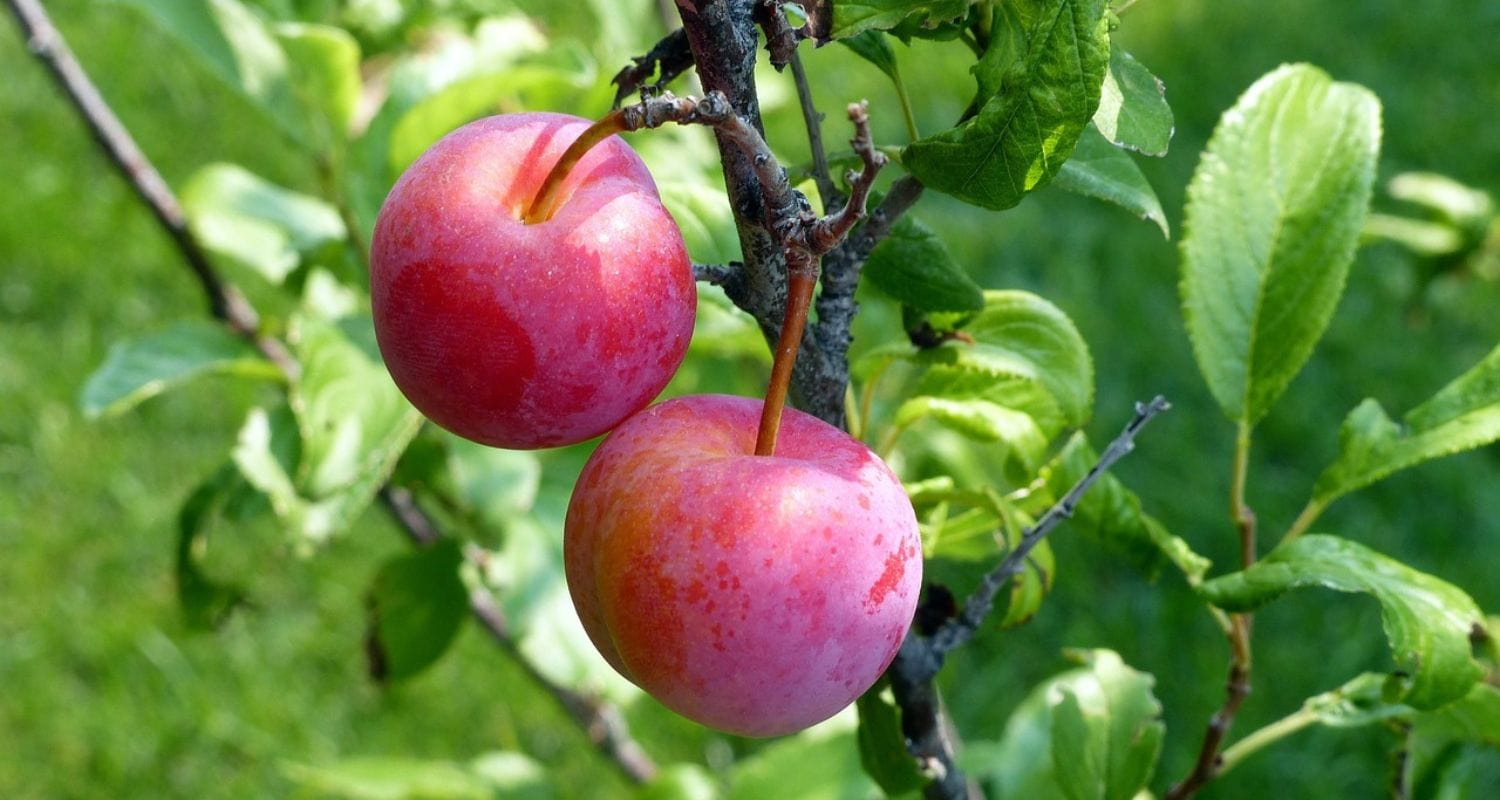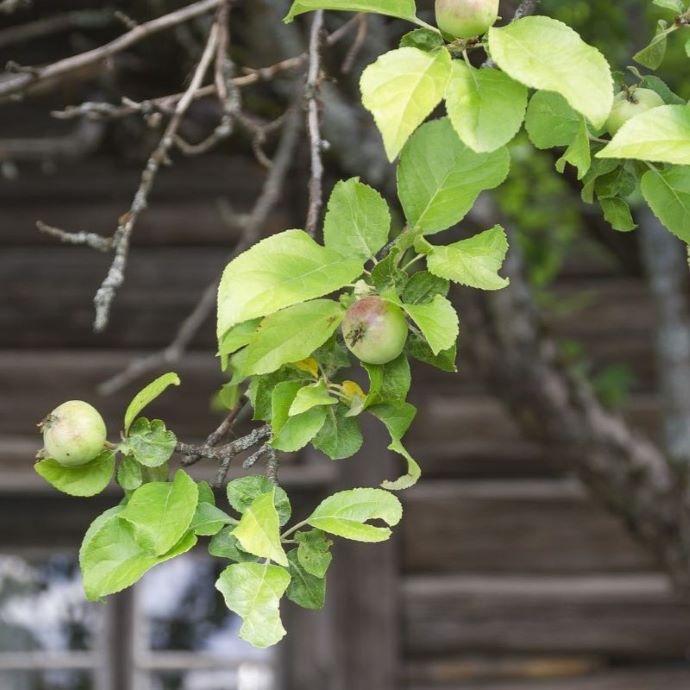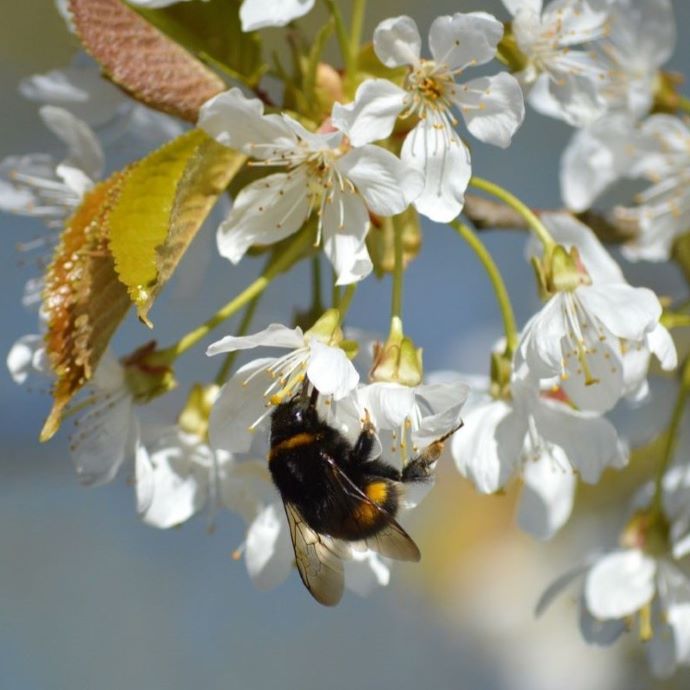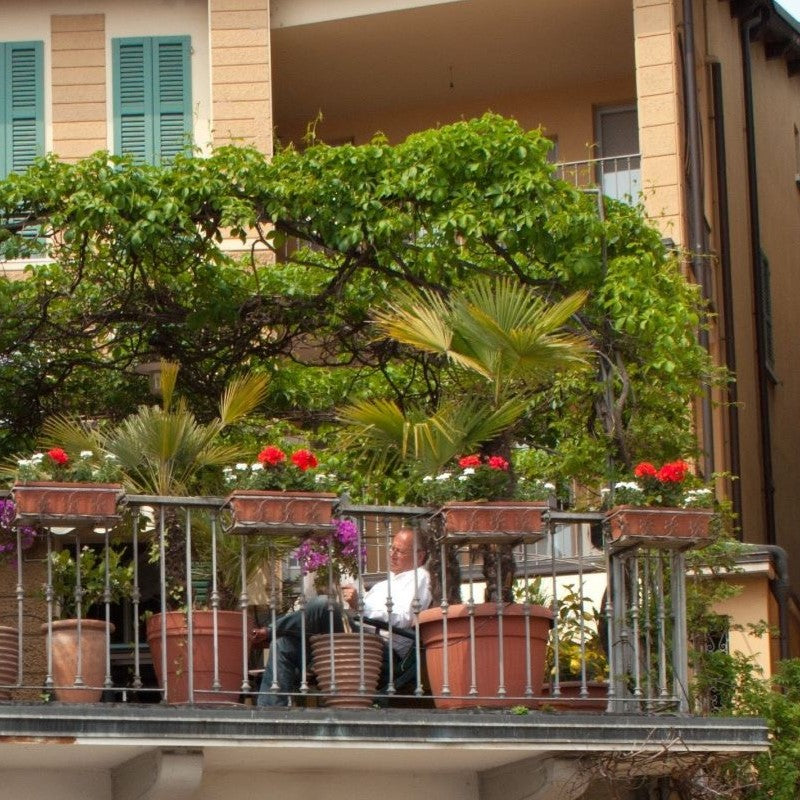Advice & Inspiration
Plum Tree Diseases: Signs and Solutions

Now, a quick disclaimer before we start… Plum trees are, generally speaking, robust, happy and healthy. But sadly, even the most hale and hearty of plants experience problems from time to time, and these fruit trees are no exception.
So, in the immortal words of Dad’s Army’s Lance Corporal Jones, don’t panic! This is a “just-in-case” type of guide you can have on hand to deal with any plum tree diseases or problems. After all, you can never be armed with too much information.
Jump to:
- Aphids
- Plum moth
- Silver leaf
- Pocket plum
- Canker (bacterial)
- Shot-hole fungus
- Sharka (plum pox virus)
- Other problems
Aphids
Aphids are annoying little insects that feed on a plant’s sap. In small populations, they can generally be populated, but they can get out of control if left to run riot. There are a couple of specific aphids known to affect plum trees, in particular.
Plum leaf-curling aphid
Signs
If you notice your tree’s leaves starting to curl, this may be due to these aphids’ sap-sucking tendencies. The insects themselves are green in colour and just a couple of millimetres in length. This curling typically occurs from mid-spring through to the season’s end.
Management
To keep on top of these aphids, you can spray the affected area with soapy water or a natural pesticide, squish them or try to get more beneficial predators like parasitoid wasps and earwigs to visit your garden.

Credit: Flickr
Mealy plum aphid
Signs
These grey-green (sometimes more pinkish-brown) cheeky chappies are a little larger than the leaf-curling aphids, and secrete a sticky honeydew that can facilitate the development of fungal diseases like sooty mould.
Management
See management section for plum leaf-curling aphids.

Credit: Flickr
Plum moth
Signs
Besides the slightly misshapen-looking fruit and plums that may seem to have ripened a touch early, the only way to tell if your fruit has been affected by plum moth is to find a pink caterpillar (around 10 millimetres in length) lurking within…
Management
If plum moths seem to be an issue, consider using pheromone traps or nematode sprays like this one. Nematodes are tiny worms (we’re talking really small – like microscopic) that can target plum moth larvae.

Credit: Flickr
Silver leaf
Signs
A fungal disease that causes a metallic-like patina to develop on your plum tree’s leaves, which in turn leads to the death of branches that have been impacted. Other signs include distorted or stunted foliage, as well as premature leaf drop.
Management
Proper pruning hygiene is essential in reducing the risk of silver leaf, as the disease typically enters plum trees via fresh pruning wounds. Pruning with sterilised equipment and during dry, fair weather can help reduce the risk of disease transmission.

Credit: Flickr
Pocket plum
Signs
While it may sound like a cute, Tamagotchi-esque bit of kit, pocket plum is actually an irritating fungal disease that leads to the development of stoneless, distorted and frankly, downright weird-looking fruit that can’t be eaten.
Management
If you notice infected areas of your tree, cut off the affected branches (sadly, you’re unlikely to get any non-affected fruit that year). Fortunately, this isn’t a common problem with plum trees grown in gardens, so it’s unlikely you’ll have to deal with it.

Credit: Flickr
Canker (bacterial)
Signs
Bacterial canker presents itself in the form of dead bark that’s sunken in appearance, alongside an oozing secretion and the dieback of newer shoots. Holes may also develop in the tree’s leaves.
Management
Practising good hygiene in terms of pruning is important to help reduce the risk of bacterial canker; cut away infected wood and, importantly, don’t use a pruning sealer (like Arbrex or Vitax Medo) – these were traditionally recommended, however nowadays it’s thought that they might actually disrupt the tree’s own restorative process.

Credit: Flickr
Shot-hole fungus (Coryneum blight)
Signs
This fungal disease causes yellow or brown spots to appear on the plum tree’s leaves, which in turn develop into pellet-sized holes (which give the condition its name) which eventually cause the leaves to fall. As for the fruit, lesions can develop and lead to the loss of the fruit.
Management
Try to water your plum tree at its base, rather than overhead – this is especially important given that younger, still-establishing trees are more prone to the condition, and these younger trees are often small enough that you could water them overhead. Don’t!
Sharka (plum pox virus)
Signs
This virus can cause your plums to become distorted, blotchy, hard-fleshed and ultimately, inedible, as well as causing the tree’s foliage to curl and become yellow, and for affected branches to experience dieback.
Management
Unfortunately, if your tree becomes infected with sharka, the only option is to remove the tree.

Credit: Flickr
Other problems
Birds
Signs
Both the fruit and foliage of plum trees can be targeted by birds, with leaves and stems being pecked at, and the plums themselves can have splits and beak holes or be removed from the tree and left partially-eaten on the ground.
Management
Using both scarers and horticultural netting offers an effective means to help stop our flighted friends from nabbing your precious fruit. Just make sure the netting is small enough so that it can’t accidentally ensnare any birds.
Greedy neighbours
Signs
Your neighbour Dave looks sheepish every time you see him by the garden fence your plum tree grows near.
Management
Confront Dave immediately.
Final thoughts
Hopefully, having read this, you’ll know what to do if your plum tree ever has the unfortunate experience of being affected by one of the above problems (we’re looking at you, Dave). We’ve also written a comprehensive article on planting plum trees, so make sure to check it out!



















